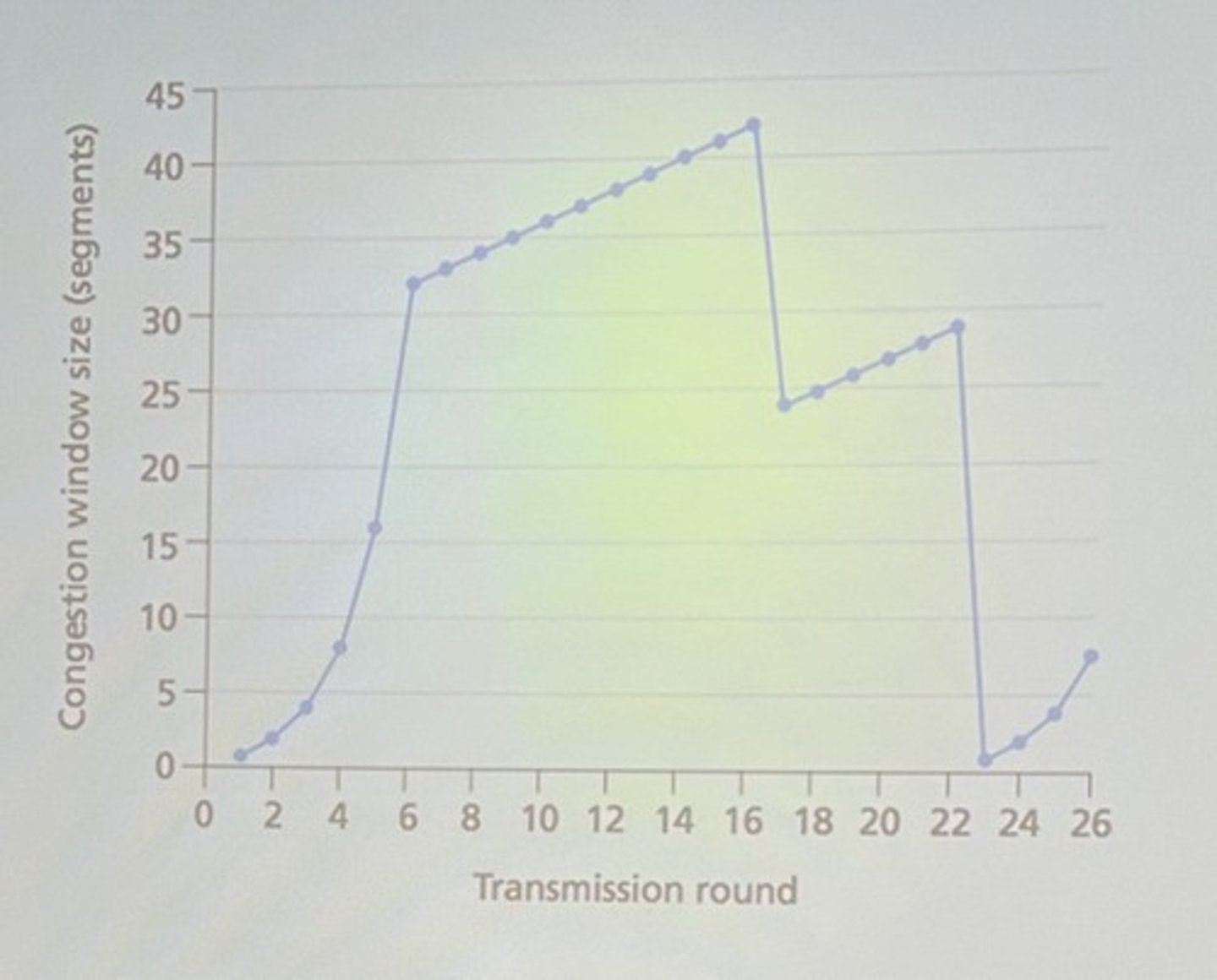Net Centric Study: TCP Definitions in Discrete Math P40
1/10
There's no tags or description
Looks like no tags are added yet.
Name | Mastery | Learn | Test | Matching | Spaced |
|---|
No study sessions yet.
11 Terms
a) Identify the intervals of time when TCP slow start is operating.
Slow start is operating when the congestion window size doubles from the round before.
So, from transmission rounds 1 to 6. Also the transmission rounds 23 to 25.
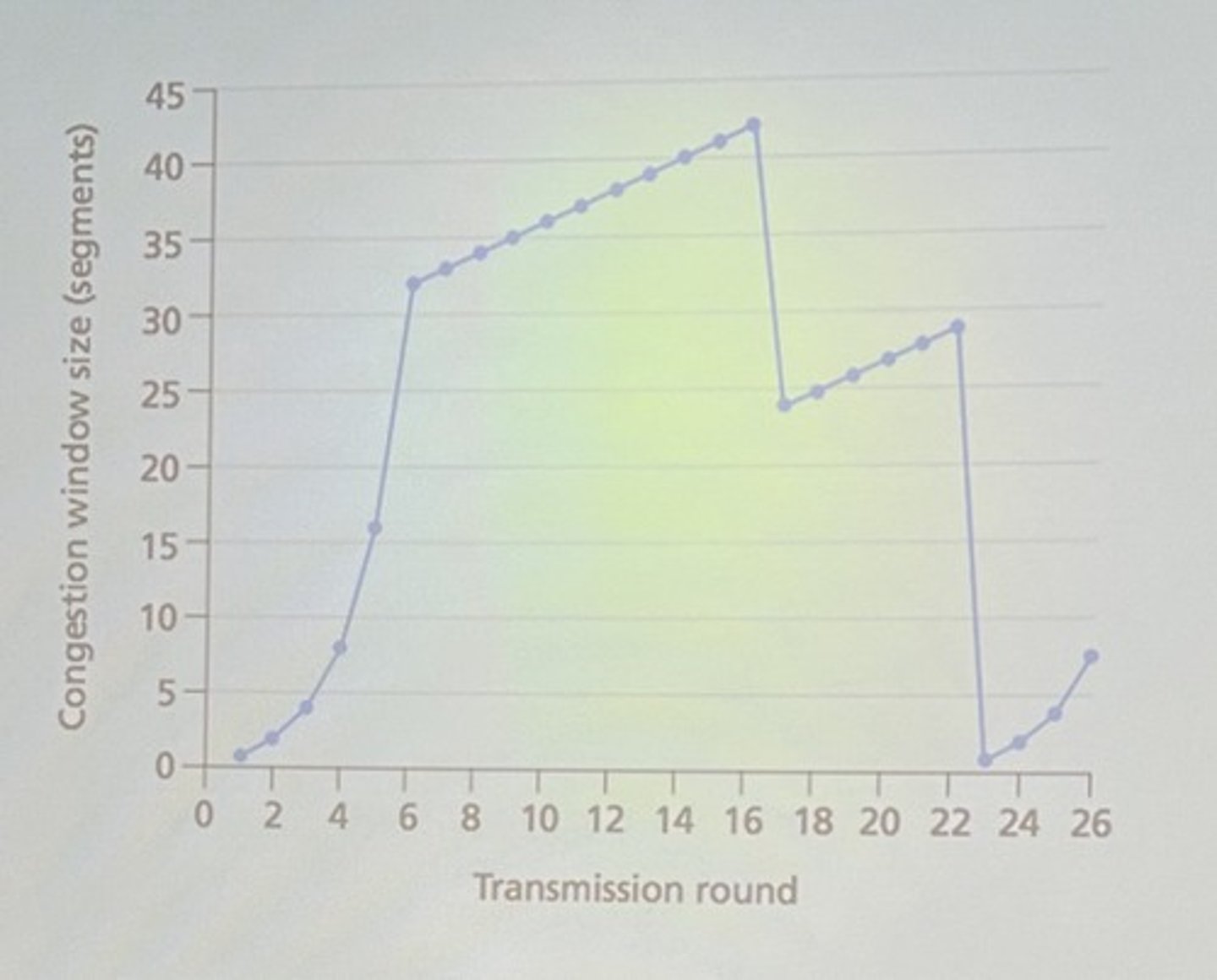
b) Indentify the intervals of time when TCP congestion avoidance is operating.
From slow start TCP Reno can switch to two states. fast recovery or congestion avoidance.
When it switches to fast recovery, the window size increases by 3 (because 3 duplicate ACK packets arrive) and then by 1 maximum segment size for every other duplicate ACK packet that arrives.
If the switch is to congestion avoidance, the window size increases by 1 for every packet that arrives.
Since from the 6-th round up to the 16-th, the increase is by one packet, that is the interval in which slow start is active.

c) After the 16th transmission roundm is segment loss detected by a triple duplicate ACK or by a timeout?
It is detected by a triple duplicate ACK. If it was a timeout, TCP would switch to slow start. Then the window size would be set back to 1.

d) After the 22nd transmission round, is segment loss detected by a triple duplicate or by a timeout?
After the 22-nd round, the window size is 1. Indicating that the segment loss was detected via timeout.
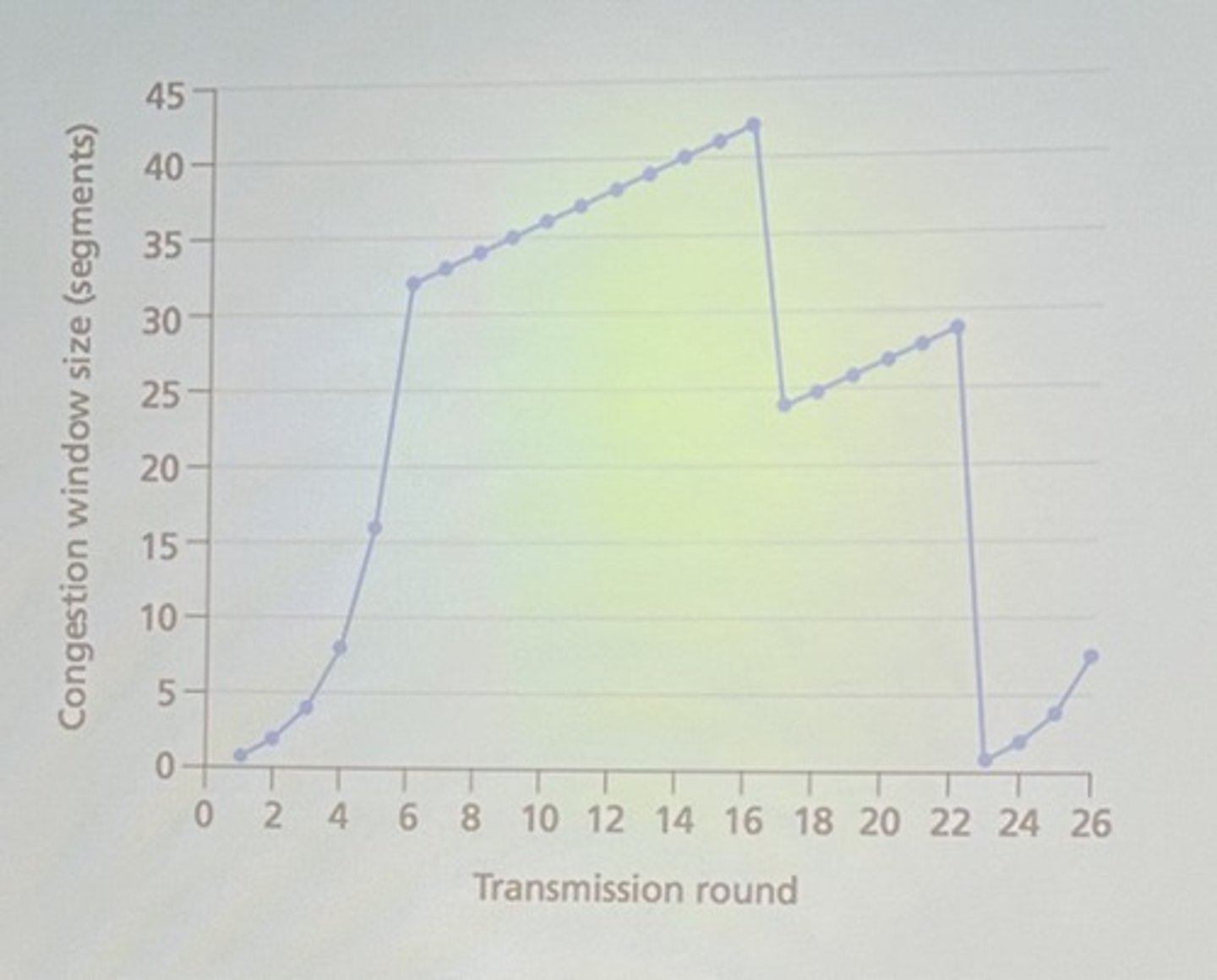
e) What is the initial valus of ssthresh at the first transmission round?
The ssthresh value is the slow start threshold. It is set to half the window size when a loss event occurs.
When in slow start the TCP window doubles every round, but when the size of the window reaches ssthresh, the congestion avoidance mode is entered.
When congestion avoidance mode is active, the window size increases by 1 MSS (maximum segment size).
This happens in round 6, when the window size is 32. Therefore ssthresh is 32 initially
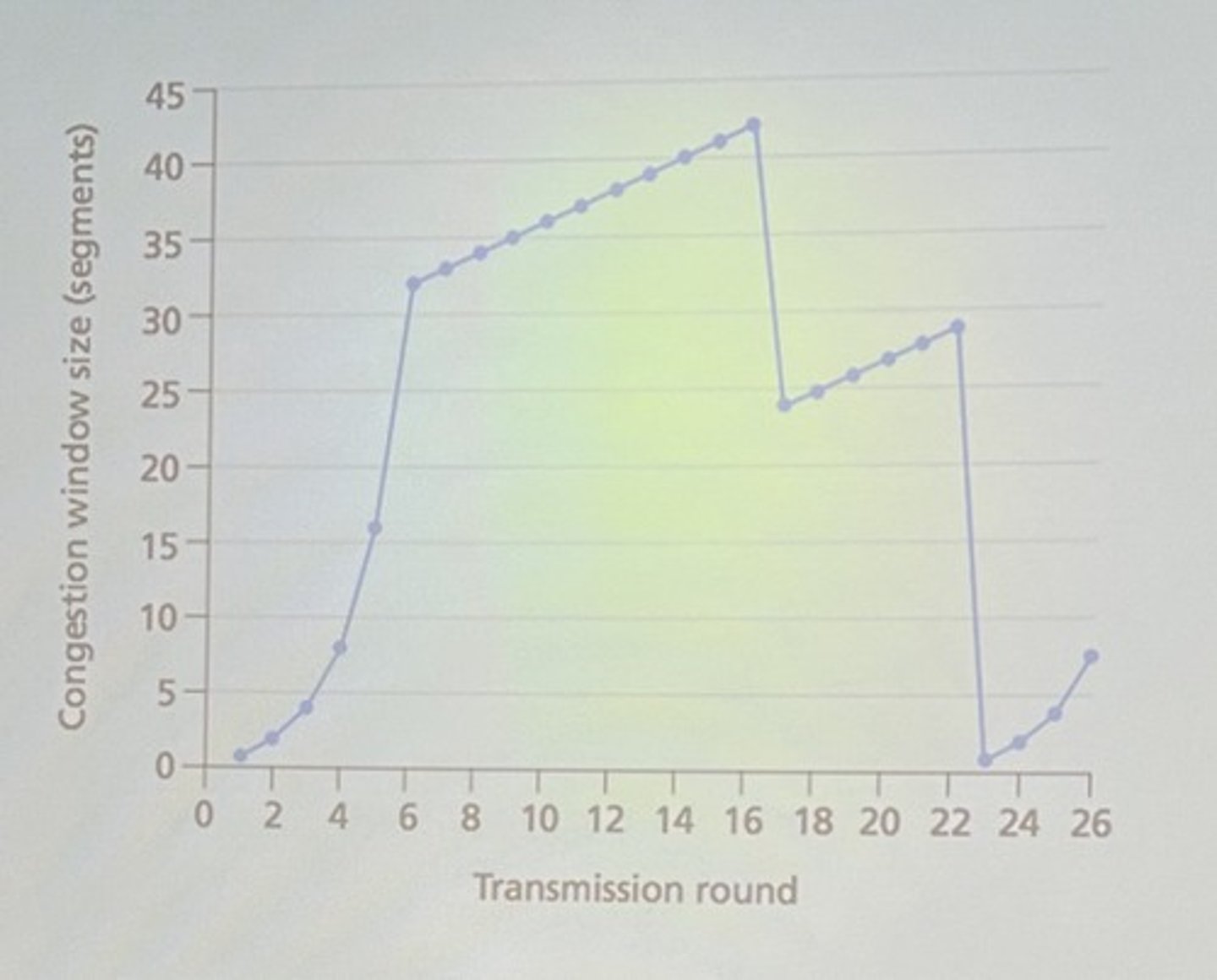
f) What is the value of ssthresh at the 18th transmission round?
The first loss event, indicated by a smaller window size, occurs in the 16-th round.
In the 16-th round, the window size is 42. So, sthresh is 422=21242=21.
But, in the diagram we can see that in the 17-th round instead of the window size being 21, it is 24.
This is because in the 16-th round a triple duplicate ACK was detected. Therefore, in the 17-th round the fast recovery mode was entered.
The window size was increased from 21 to 24 because of the triple duplicate ACK.
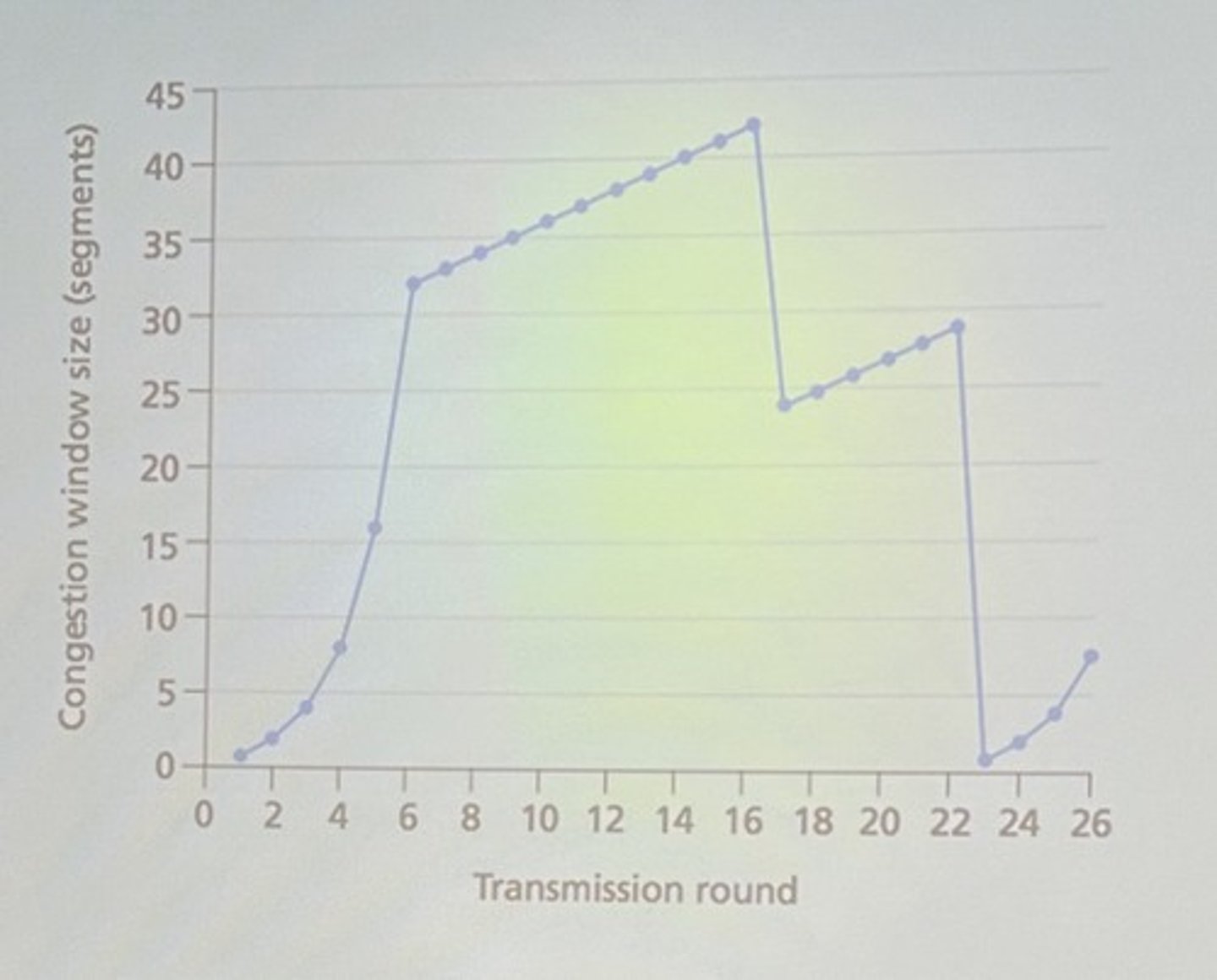
g) What is the value of ssthresh at the 24th transmission round?
The value of ssthresh is set to half the window size when a loss event occurs. The most recent loss event happened on round 22. The window size then was 29 MSS. The value of ssthresh is then 292=14229=14 (rounded down)
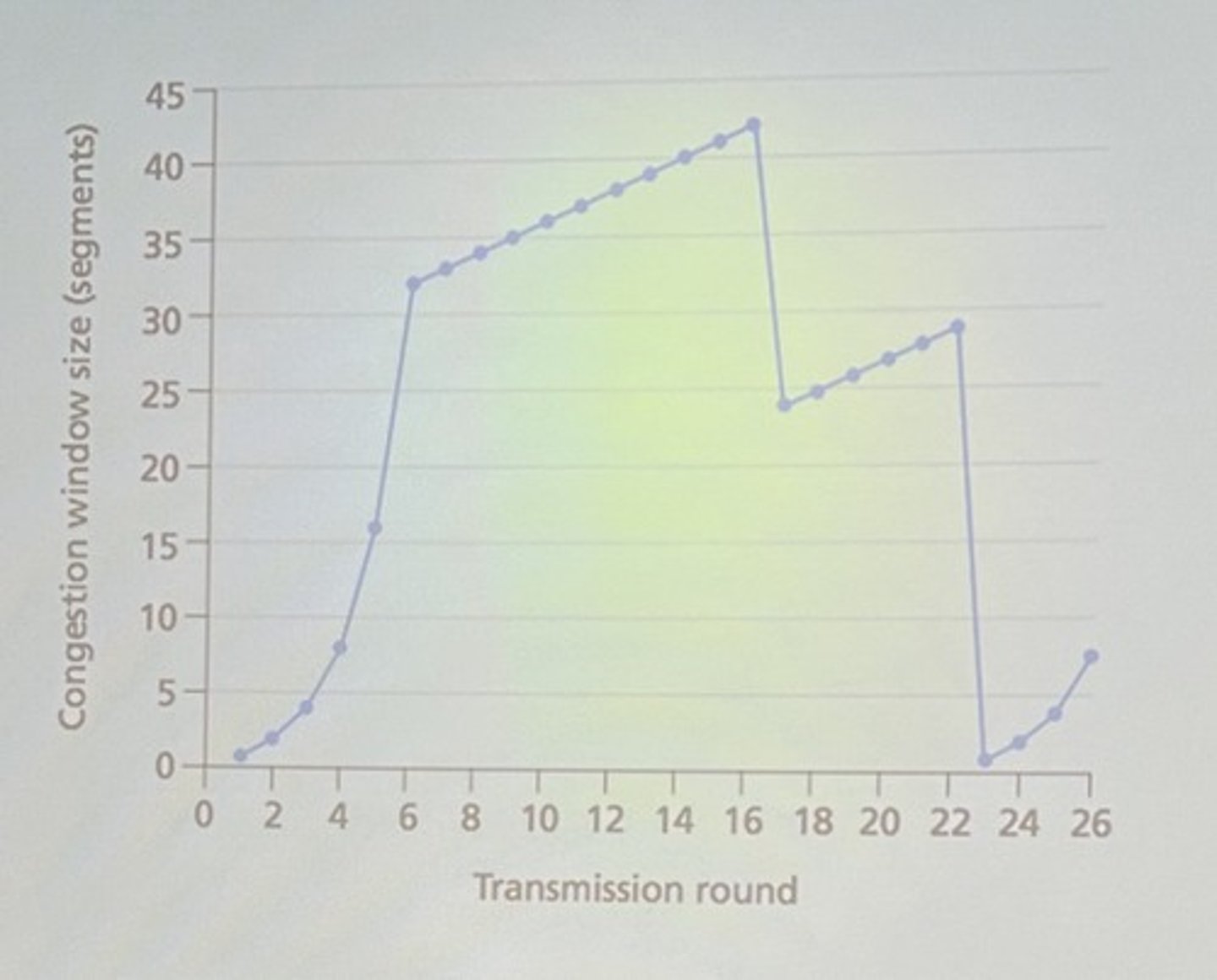
h) During what trasnmission round is the 70th segment sent?
During each round, the maximum amount of segments (packets) is sent. That is, window size (in segments) segments are sent.
During round 1 there is 1 packet sent. During round 2 there are 2 packets sent. During round 3 there are 4 packets sent. During round 4 there are 8 packets sent. During round 5 there are 16 packets sent. During round 6 there are 32 packets sent. During round 7 there are 33 packets sent.
The 70-th segment is therefore sent during round 7.

i) Assumign packet loss is detected after the 26th round by the recipient of a triple duplicate ACK, what will be the values of the congestation window size and of ssthresh?
The value of sstresh would be set to half the current window size.
That is, 72=327=3 MSS.
When a triple duplicate ACK packet is sent, the window size increases by three.
Therefore, the window size would be 7+3=107+3=10
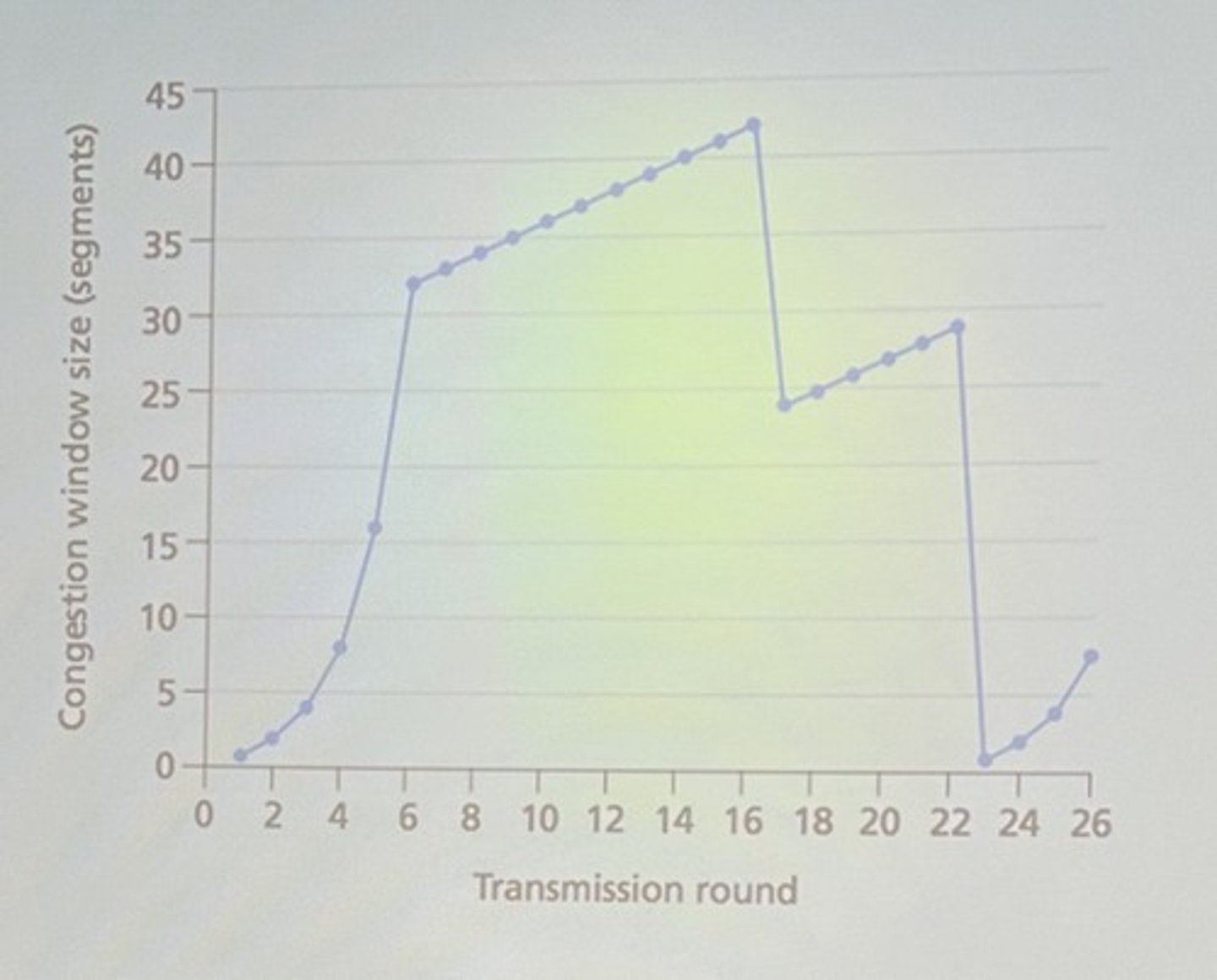
j) Suppose TCP Tahoe is used (instead of TCP Reno), and assume that triple duplicate ACKs are received at the 26th round. What are the ssthresh and the congestation window size at the 19th round?
TCP Tahoe does not go into fast fast recovery when a triple duplicate ACK is received. Instead, it goes into slow start. In the 16-th round the window size is 24.
Therefore ssthresh would be set to 242=12224=12.
The window would then be set to 1 in the 17-th round and then, assuming no loss event occurs, doubled every round.
So, the window size would be 2 in the 18-th round and 4 in the 19-th. The ssthresh value is still 1212.

k) Again suppose TCP Tahoe is used, there is a timeout event at 22nd round. How many packets have been sent out from 17th round til 22nd round, inclusive?
In the 16-th round, a triple duplicate ACK is sent. TCP Reno enters the fast recovery state, but TCP Tahoe enters slow start.
Also, the ssthresh value is set to 422=21242=21.
So, the window size is set to 1 in the 17-th round, and doubled every round after.
Window size is 2 in the 18-th. Window size is 4 in the 19-th. Window size is 8 in the 20-th. Window size is 16 in the 21-st. Now, in the 22-nd round, the ssthresh value of 21 is reached, limiting the size of the window.
Then congestion avoidance is entered.
